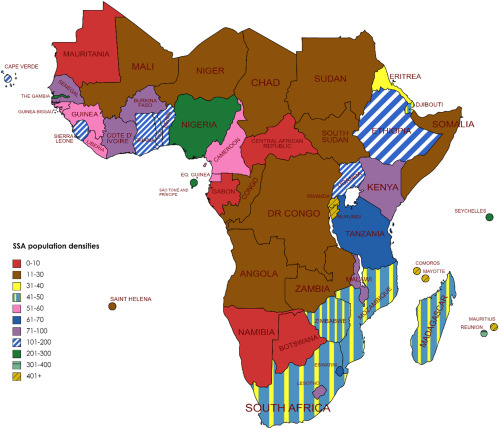AP Human Geography Ch.2 Population
1/40
Earn XP
Description and Tags
This knowt is suppose to help you memorize the first part of Unit 2 of AP Human Geography.
Name | Mastery | Learn | Test | Matching | Spaced |
|---|
No study sessions yet.
41 Terms
Highest rate of the world’s natural increase
30% South Asia.
What continents have exceedingly high and low TFR’s
High TFR’s: Africa, Southwest Africa Sub-Saharan Africa.
Low TFR’s: Europe, North America, Southeast Asia.
Know the country that was first to enter Stage 2 of the DTM
England
Stage 1 DTMcharacteristics
Stage 1: Low Growth
Very high CBR
Very high CDR
Very low NIR
Stage 2 DTM characteristics
Stage 2: High Growth
High CBR
Rapidly declining CDR
Very high NIR
Stage 3 DTM characteristics
Stage 3: Moderate Growth
Rapidly declining CBR
Moderately declining CDR
Moderate NIR
Stage 4 DTM characteristics
Stage 4: Low Growth
Very low CBR
Low or slightly increasing CDR
Zero or negative NIR
Which country was negative NIR.
China due to its one-child policy and aging population.
Japan also experiences negative NIR due to low birth rates and an aging population.
Highest dependency ratio in the world
47% Europe and 87% Sub-Saharan Africa
Know the population percent of city and farmers in Europe
¾ live in cities. fewer than 5 percent are farmers. Approximately 75% live in urban areas, while less than 5% are engaged in agriculture.
Know the principle of physiological density
The total population in proportion to the area of arable land. It measures the number of people per unit area of arable land, indicating the pressure on agricultural resources.
Definition of eugenics
Encouragement of one race or specific group of people to have large families at the expense of another group of people(have a perfect race). A controversial belief and practice aimed at improving the genetic quality of a human population by promoting reproduction among those deemed "desirable" and restricting it among those considered "undesirable."
Shape of the population pyramid of a developed country
lopsided vase
Stage 2 population Population Pyramid
Stage 2 - Pyramid with a wide base and narrow top, indicating high birth rates and declining death rates.
Stage 3 population pyramid
A population pyramid with a narrowing base that shows a more rectangular shape, indicating declining birth rates and low death rates, typical of developed countries.
Country that are in Stage 2 DTM only need one
Afghanistan, Nigeria, Yemen, most of Sub Saharan Africa

Where a relatively young age structure would be found
Less Developed Countries
Crude Death Rate/ World Mortality Rate
The number of deaths per 1,000 people in a population over a specific period
Infant Mortality Rate (IMR)
The number of deaths of infants under one year old per 1,000 live births in a given year.
Child Mortality Rate (CMR)
The number of deaths of children aged 1 to 5 years (before their 5th birthday) per 1,000 live births in a given year.
Why U.S. and Canada have a higher crude death rate than Mexico
They have more elderly people than Mexico
US - 8.33/1000
Mexico - 4.8/1000
Know the characteristics of a society in the last stage of the DTM
Stage 4 Low Stationary has low birth rates and low death rates (birth 15 and death 10 or lower) SPL Stationary Population Level
What Switzerland, Canada, and New Zealand have in common with population growth
They all have low population growth rates due to high levels of urbanization, economic development, and access to healthcare.
Know the similarities of “stationary” and “expanding” growth rates in the DTM
Stationary growth rate - Doesn’t go up or down that much
Expanding growth rate - Goes up a lot quickly
Know the difference between physiological density and crude population density
Physiological density measures the number of people per unit of arable land, while crude population density measures the total number of people per unit area of land.
Know how to compute arithmetic density
total number of people divided by the total land area.
Know the TFR replacement rate number to have a steady population
2.1
Know what a country could try to do to promote economic growth with an aging population
Immigrants would fill roles for jobs.
Know why Africa’s population continues to grow even though TFR is declining
When TFR declines, demographic momentum from previous high birth rates still contributes to growth.
What describes the concept that population grows even when TFR rates decline
Demographic momentum
Where the majority of India’s population would be located (
2 Major rivers in India: Ganges and Indus river
Know what determined Europe’s population location throughout the years
Coal fields.
Know the major focus (majority) of North America’s population
Near the water and megalopolis.
What was offered as payments at times for debts in Afghanistan
Women
Thomas Malthus idea of subsistence grew at what rate
Population growth was exponential and subsistence(food) grew at a linear rate
Know the two things that add to a population growth of a country (notes)
Reproduction and immigration.
How the world’s population time is trending today
It is increasing. Doubling time.
What Switzerland, Canada, and New Zealand have in common with population growth
Low population growth rates
What has caused the decline of birth rate in Europe
Education, industrial revolution snd agricultural revolution led to people moving to major cities